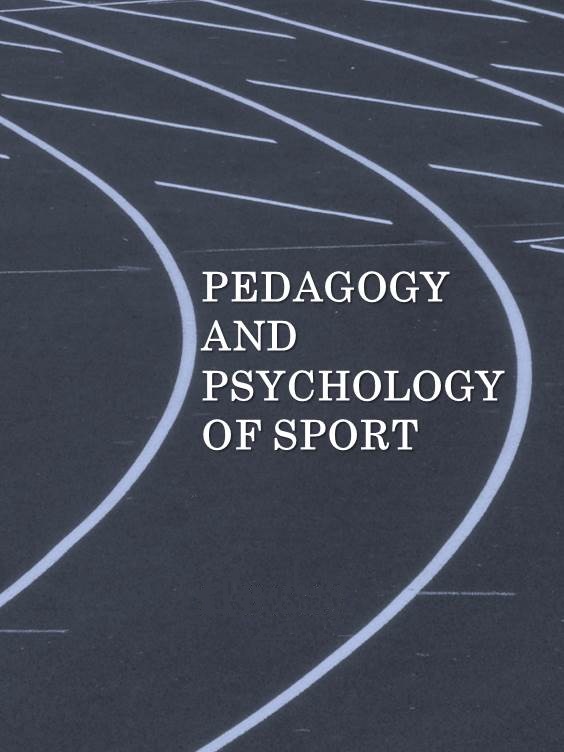Treatment of primary obstructive megaureter in children using minimally invasive technologies
DOI:
https://doi.org/10.12775/PPS.2020.06.02.011Keywords
heterochrony, ureterohydronephrosis, stenting, ureter, children, urodynamicsAbstract
Introduction. The final formation of the child's functional systems completed during postnatal ontogeny. To create optimal conditions for the functioning of the body is necessary either to decrease the level of functional requirements to the immature system, or the creation of new operating conditions under which the extended maturation time factor. Relevance. Currently, the most common treatment for obstructive uropathies is surgical treatment. To create optimal conditions for the functioning of the body, it is necessary either to reduce the level of requirements for an immature functional system, or to create new functioning conditions under which the ripening time factor is extended. Objective: Rationale and introduction of minimally invasive endoscopic draining techniques aimed at restoring urodynamics by using a PVC intraluminal drainage (stent). Materials and methods. The possibility of stenting with determination of the size of the ureteric orifice was investigated. The study involved 32 children aged from birth to three years. A retrospective analysis of previously treated 41 patients with obstructive ureterohydronephrosis was performed. Results. The study found that the optimal age for endoscopic correction of the intramural ureter is up to 3 months of life, when telescopic bougienage with dilation of the intramural compartment of the compromised ureter can be performed with calibration of the ureteric orifice and stent of the ureter with a corresponding stent. Retrospective analysis of previously treated patients allowed us to determine the same dependence. Thus, out of 41 patients with obstructive ureterohydronephrosis positive result was achieved in 29 children (70.73%) up to 1 year and 6 (14.63%) over 1 year. The impossibility of performing endoscopic correction of the orifice and stenting of the ureters in the age group up to 1 year was noted only in 1 patient (2.43%), whereas in the group from 1 year to 3 years - in 5 patients (12.19%). Conclusions. The proposed tactics of treatment of obstructive uropathy in children has advantages in terms of open surgical techniques in the technical simplicity, minimally invasive, maximum physiological, reducing the incidence of postoperative complications. It should be remembered that the effectiveness of endoscopic stenting of the lower parts of the ureter depends on the age of the child.References
Lukianenko N.S., Kens K.A., Petritsa N.A., Koroliak O.Ya. (2015). Pryrodzheni vady rozvytku sechovydilnoi systemy v ditei rannoho viku ta syndrom nedyferentsiiovanoi dysplazii spoluchnoi tkanyny [Congenital malformations of the urinary system in infants and syndrome of undifferentiated tissue dysplasia]. Pochki, 1(11), 12–17. [in Ukrainian]. eLIBRARY ID: 23591424
Buchmin, A. V., Rossikhin, V. V., Krivoshej, A. V., & Turenko, I. A. (2016). Fenotipicheskie proyavleniya displazii soedinitel´noj tkani pri dismetabolicheskhoj nefropatii i khronicheskhom pielonefrite [Phenotypic manifestations of tissue dysplasia with dysmetabolic nephropathy and chronic pyelonephritis in children]. Urologiya, andrologiya, nefrologiya – 2016. Proceedings of the Scientific and Practical Conference, (P. 34–36). Kharkіv. [in Russian].
Zhuravlev V.N., Bazhenov I.V., Istoksky K.N., Filippova Y.S., Galperin A. M. (2013). Klinicheskaya reabilitatsiya patsiyentov posle rekonstruktivnykh retroperitoneoskopicheskikh (RPS) operatsiy na puzyrno-mochetochnikovom segmente [Clinical rehabilitation of patients after retroperitoneoscopic operation on vesico-ureteral segment]. Ural Medical Journal, 9(114), 34-40. [in Russian]. eLIBRARY ID: 21057011
Strizhakovskaya, L. O., & Khmara, T. V. (2013). Sovremennye vedomosti pro vrozhdennye poroki mochetochnika [Modern Information about Congenital Malformations of the urether]. Vestnik problem biologii i mediciny, 1, 2(99), 35–39. [in Russian]. eLIBRARY ID: 19421860
Menovschikova L.B., Levitskaya M.V., Gurevich A.I., Betanov Z.V., Petrukhina Yu. V., Sklyarova T.A. (2015). Maloinvazivnyy metod lecheniya nereflyuksiruyushchego megauretera u mladentsev [Low-invasive method for treatment of infantile nonreflexing megaureter]. Perm Medical Journal. 32, 2, 19-24. [in Russian]. eLIBRARY ID: 23498948
Peterburgskyy V.F., Golovkevich V.V., Guyvan G.I. (2013) Ekhohrafichni markery dekompensatsii urodynamiky pry nereflyuksuyuchomu mehaureteri u ditei molodshoho viku [The echographic markers of urodynamics decompensation in nonrefluxing megaureters in infants]. Urolohiia, 3(66), 11-13. [in Ukrainian]. eLIBRARY ID: 25676068
Salnikov V.Y., Gubarev V.I., Zorkin S.N., Filinov I.V., Petrov E.I. (2016) Endoskopicheskaya ballonnaya dilatatsiya vysokogo davleniya kak metod lecheniya pervichnogo obstruktivnogo megauretera u detey [High-pressure endoscopic balloon dilatation as the method of primary obstructive megaureter treatment in children] Pediatria. Journal named after G.N.Speransky, 95, 5, 48-52. [in Russian]. eLIBRARY ID: 26685007
Dmytriakov V.A., Svekatun V.M., Stoyan M.S., Kornienko H.V. (2018) Selektivno-segmentarnaya rezektsiya pochki kak al'ternativa organounosyashchim operatsiyam pri gidronefroze u detey [Selective-segmental resection of the kidney as an alternative to nephrectomy in children with hydronephrosis] Sovremennaya Pediatriya, 2, 26-30. [in Russian]. doi: 10.15574/SP.2018.90.26
Dmitryakov V.A., Svekatun V.N., Stoyan M.S.1, Kornienko G.V., Polishchuk V.D. (2017) Patogeneticheskoye obosnovaniye maloinvazivnykh metodik v korrektsii geterokhronii organov mochevyvodyashchey sistemy [Pathogenetic substantiation of minimally invasive methods of urinary system heterochrony correction] Zaporozhye Medical Journal, 4, 436-440. [in Russian]. doi: 10.14739/2310-1210. 2017.4.104952
Akilov H.A., Hakkulov E.B. (2015) Lecheniye ureterogidronefroza v sochetanii s ureterotsele u detey [Treatment of Ureterohydronephrosis in Association with Ureterocele in Children] Bulletin of problems biology and medicine, 1 (122), 3, 75-78. [in Russian]. http://nbuv.gov.ua/UJRN/Vpbm_2015_3(1)__17
Goldsmith, Z., Oredein-McCoy, O., Gerber, L., Bañez, L., Sopko, D., Miller, M., et al. (2013). Emergent ureteric stent vs percutaneous nephrostomy for obstructive urolithiasis with sepsis: patterns of use and outcomes from a 15-year experience. BJU International, 112(2), E122–E128. doi: 10.1111/bju.12161.
Dmitryakov, V. A., Stoyan, M. S., Svekatun, V. N., Polishchuk, V. D., & Stoyan, A. K. (2016). E´ndoscopicheskoe lechenie gidronefroza u detej. [Endoscopic treatment of hydronephrosis in children]. Urologiya, andrologiya, nefrologiya – 2016. Proceedings of the Scientific and Practical Conference. (P. 186–187). Kharkіv. [in Russian]
Sertic, M., Amaral, J., Parra, D., Temple, M., & Connolly, B. (2014). Image-Guided Pediatric Ureteric Stent Insertions: An 11-Year Experience. Journal of Vascular and Interventional Radiology, 25(8), 1265–1271. doi: 10.1016/j.jvir.2014.03.028.
Parente, A., Angulo, J., Romero, R., Rivas, S., Burgos, L., & Tardáguila,A. (2013). Management of Ureteropelvic Junction Obstruction With High-pressure Balloon Dilatation: Long-term Outcome in 50 Children Under 18 Months of Age. Urology, 82(5), 1138–1144. doi: 10.1016/j. urology.2013.04.072.
Downloads
Published
How to Cite
Issue
Section
License
The periodical offers access to content in the Open Access system under the Creative Commons Attribution-NonCommercial-ShareAlike 4.0
Stats
Number of views and downloads: 682
Number of citations: 0



